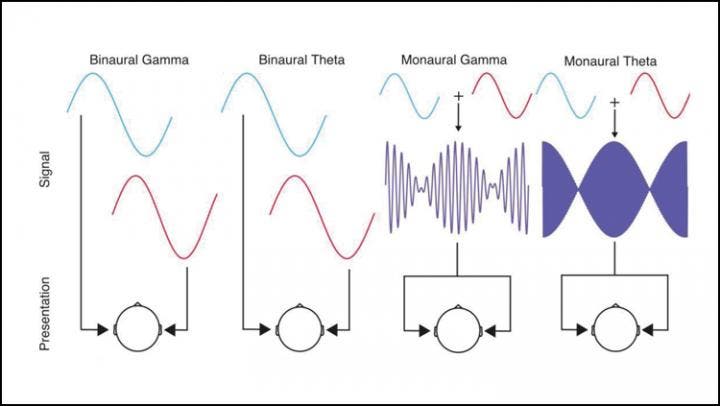
Binaural beats are auditory illusions that occur when you hear slightly different frequency sounds, one for each ear. The minute differences between the two tones create the illusion of a third sound, a rhythmic beat. Some claim that so-called binaural beat therapy sessions can help people with anything from increased productivity and reduced anxiety, to better mood and sleep. However, a new study found that the mood-altering potential of binaural beats is no better than a placebo.
Hector D Orozco Perez, the lead author of the new study, embarked on the research five years ago while on a research internship in Dr. Alexandre Lehmann‘s lab at McGill University.
Perez compared the effects of binaural beats with a control beat stimulation (monaural beats) on a group of healthy adults whose brain activity was measured with electroencephalography (EEG).
Both stimuli elicited standard subcortical responses at the pure tone frequencies of the stimulus but didn’t cause any mood modulation in the participants.
“Based on our results, we did not find any mood modulation that is specific to binaural beats. As we discuss in the paper, it might be worth exploring how binaural beats affect attention and cognition. That being said, though binaural beats can synchronize the brain, it remains an open question whether they have any measurable effect on mood or cognition,” Perez told ZME Science.
However, when the binaural beat was played, far apart brain areas synchronized with each other at a different frequency than the beat, which may explain why some scientists have reported that binaural beats might slightly improve memory and focus. “We did not measure this so we cannot know for sure, but we consider this to be something worth of exploration,” Perez said.
Beyond memory and focus, binaural beats do not seem to provide any psychological benefit, despite what some might claim.
“I think the public should care about this because there are people out there profiting on pseudo-scientific claims that have been (in the most part) not backed up by scientific findings. This kind of research helps us understand this “alternative” techniques, so the public can make more informed choices regarding them,” Perez said.
The findings appeared in the journal eNeuro.



